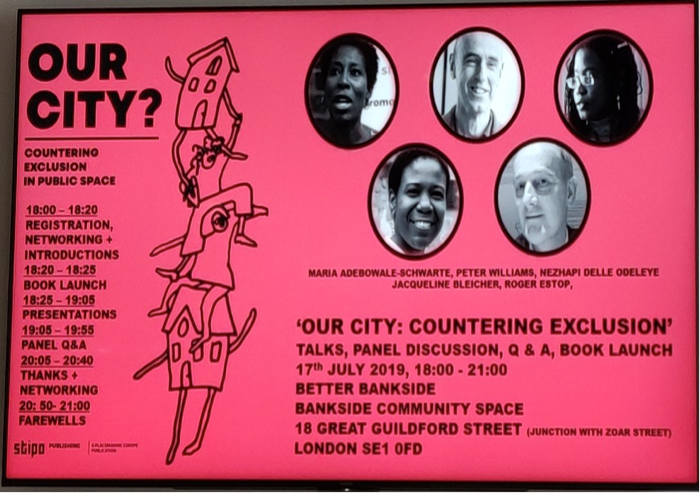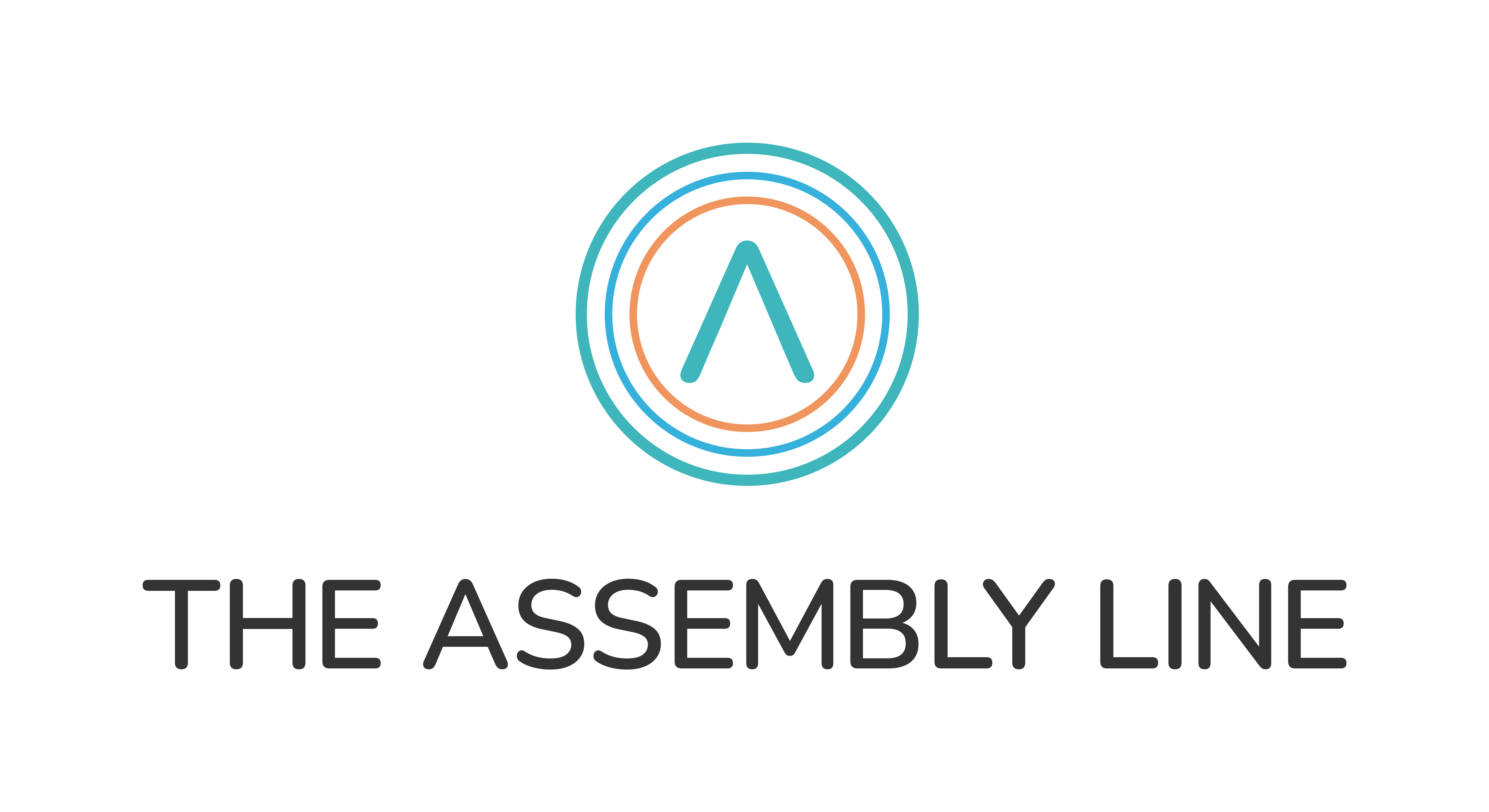
27 Aug Launch of the new placemaking book ‘our city’
Last month, I attended a placemaking regeneration event and book launch titled: ‘Our city: countering exclusion by designing cities for all’ in London.
The event was held to provoke a discussion and to mark the launch of the book, which looks at how public spaces can represent and serve the people that use them. It covered a wide range of topics around placemaking, profiling five case studies by authors who are included in the book.
Somewhat surprisingly, the discussion didn’t start by positioning place shaping as being a warm and fluffy activity in isolation to the events around it. It was discussed as being quite the opposite and there were strong views from the authors as to just how political the placemaking process/discipline is. It was agreed that while regeneration delivers social and economic value, it is likely to become more affected by political views, as the world continues to urbanise. Places are not contained within a boundary – they are not made, they are constantly evolving and changing.
We heard about the importance of getting placemaking right by being inclusive and the role of ‘placemaker’ is often perceived to be about bridging the gap between the local authority, the (property) developer and the community. It was felt by all at the event, that more recognition needs to be given to the stakeholders during the consultation and in future planning sessions. Stakeholders are everyone in the area undergoing change, for example, a commuter, resident, business owner, visitor, student or tourist. In some cases stakeholders may not yet exist as to where large-scale developments or master plans are being created, often spanning 25 years and longer, the place is being created for the next generation who may not yet have been born! The importance of young people (and the people around them) is often sadly overlooked.
The expert and community relationship
Increasingly there is a perception that experts have all of the answers. But in many cases, the community have credible answers and solutions from using the place regularly, that an expert can’t match from just visiting. There was an agreement that the same weight needs to be given to community views as to the experts’ ones. We believe the expert’s role is to listen and gather those views from the community; to draw them out and shape them.
When it comes to large-scale developments, the relationship between councils, developers and local communities seems to be broken or at least operating in a fractured format. A lot is said about the importance of community engagement but often it’s the last stage of the process which leads to suspicion on behalf of stakeholders that they have a part to play and will be listened to.
In July 2019, Grosvenor, Britain, and Ireland (one of the world’s largest property businesses) published a report on public trust in placemaking in the UK. Whilst much has been made of the results showing only 2% of the public trust developers (when it comes to planning for large-scale development), the results hardly cause for celebration on the public sector side where only 7% trust local authorities.
What is placemaking?
The debate also picked up a wider discussion around the types of roles that exist in placemaking and two definitions were offered:
- Place maker: a role that focuses on interpreting different views and developing a narrative
- Place spinner: a role with a pre-ordained narrative and a route to delivery (where the suspicion arises around consultation)
To widen this discussion, we listened to a podcast from The Royal Geographical Society – How is high street regeneration managed with Dr. Steve Millington at the Manchester Metropolitan University and a Director of The Institute of Place Management.
Steve picks up the discussion in highlighting how placemaking has become a catch-all term that now means different things to different people, with it widely used by architects, planners, urban designers, property developers, and local government but he points out that geographers have been talking about ‘place’ for 150+ years. He argues that placemaking is associating with changing existing places and the creation of the new.
He goes on to suggest that perhaps ‘place keeping’ is a more accurate term in relation to people losing their sense of place. What are they losing? What are they gaining? How do they keep the good while developing the new? However, it can be associated with the everyday maintenance of a place so it’s still not the perfect descriptor….
Key takeaways from the event
- Give participants (in engagement events) actions and ownership to make things happen. At a consultation event in Chelmsford (Essex) there were 100+ ideas generated. Participants were asked to make a pledge; to take away one idea to make it happen
- Governance models are changing and coming down to a lower level (for example, community groups and social enterprises have a greater say and neighbourhood plans shape places) and this needs to be considered in how engagement happens. It’s not a case of private (sector) bad, pubic (sector) good as we can see from the Grosvenor report, it’s about letting the people have a say and a part in the decision
- Find new ways to engage and connect people with their place. Again, in Chelmsford, we heard that a planner led a city walk where the feedback was that it was the first time that someone had explained the city in a planning context to local people. This helped them to understand the structure of the city and how it was developed and therefore connect with their place
- Communities need space to come together; somewhere they can meet, drop-in and engage. On the Old Kent Road in southeast London, the community crowdfunded to secure an empty shop unit to use as a hub (‘urban room’) during wide-ranging engagement about the future development of the area. The ‘urban room’ houses a model of forthcoming developments, has drop-in sessions to find out more and served as a meeting point for walks around the area
- Consider the changing roles across placemaking. As the private sector increasingly takes the lead on delivery (particularly property developers) of what was the public sector delivered services there is a need to adapt leadership and project approaches where there are different cultures and motivations between the two sectors to deliver the end result
- Map time to really understand a place Look at activity, movement and people and where and how they overlap to understand users interact with their place
What do you consider to be a good definition of ‘placemaking’ or a more suitable term for what happens within it?
Get in touch to find out about how we can help your place projects.

